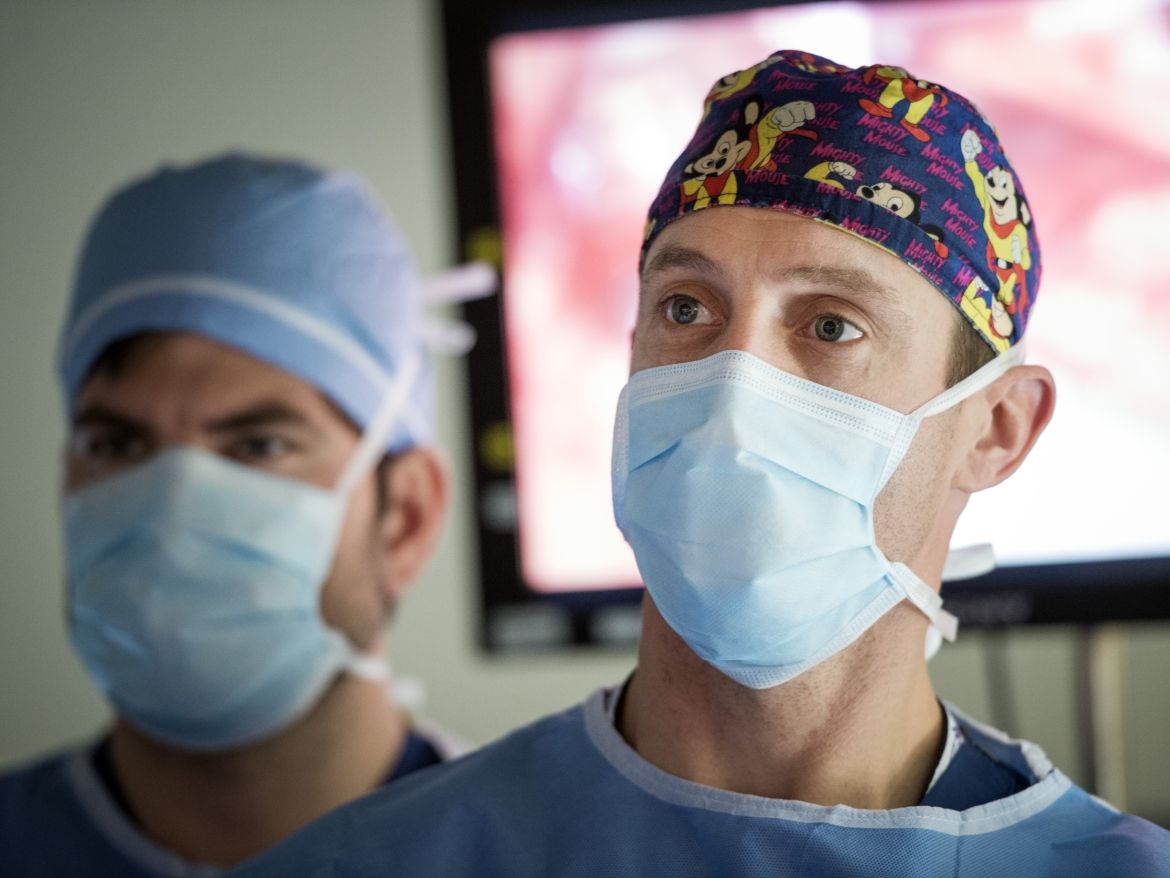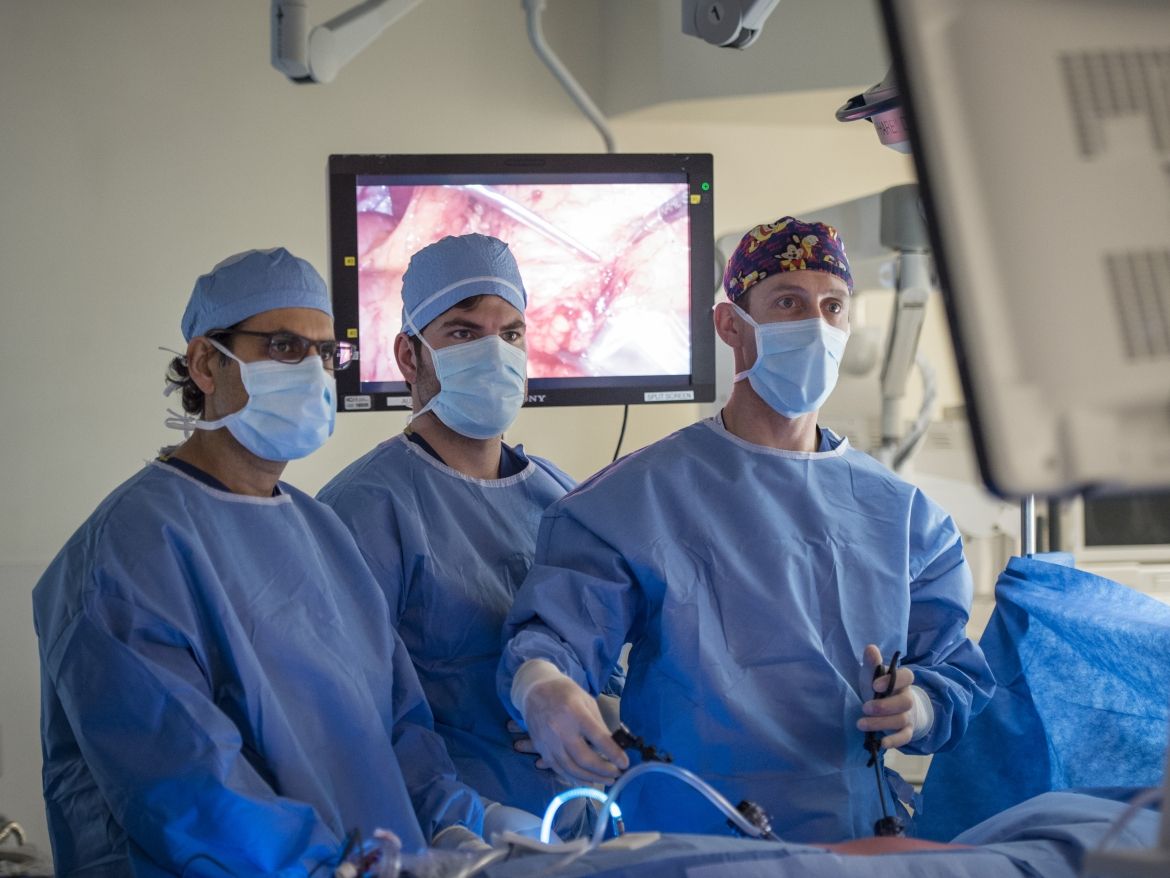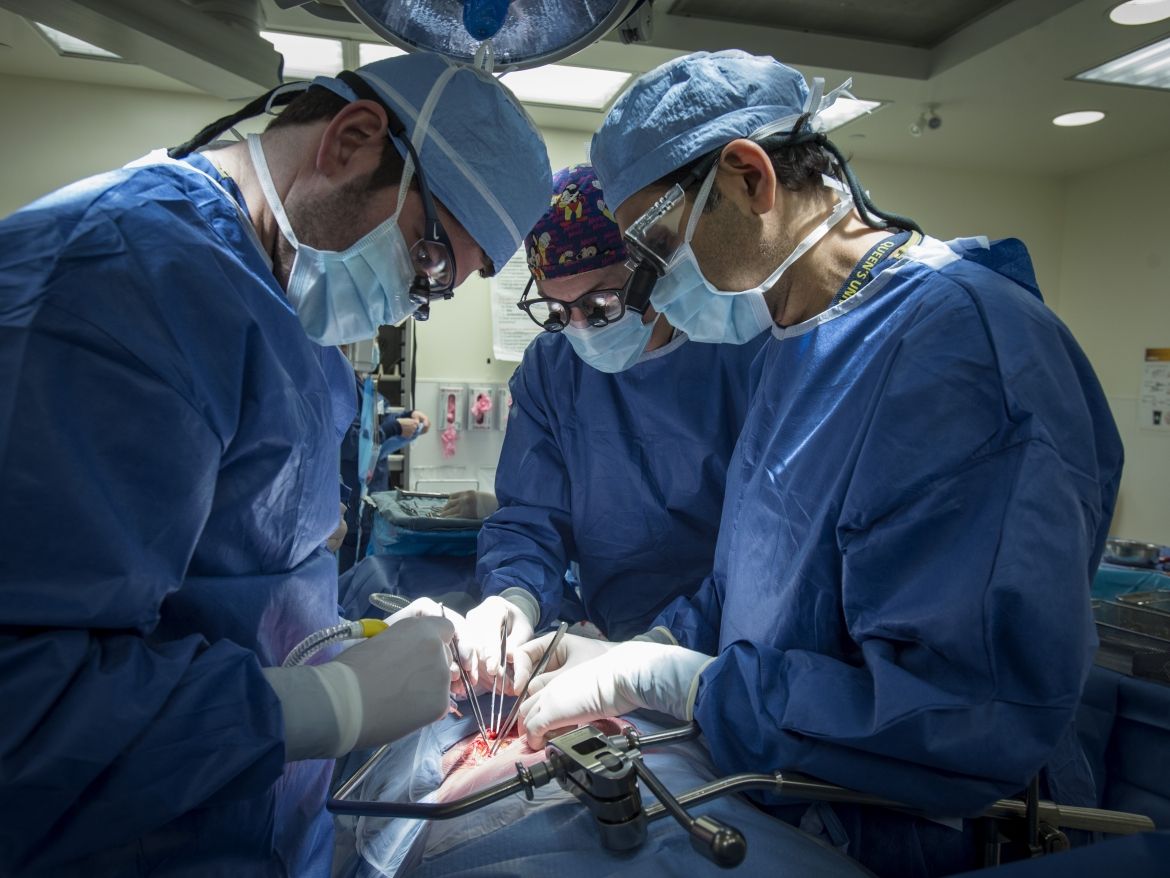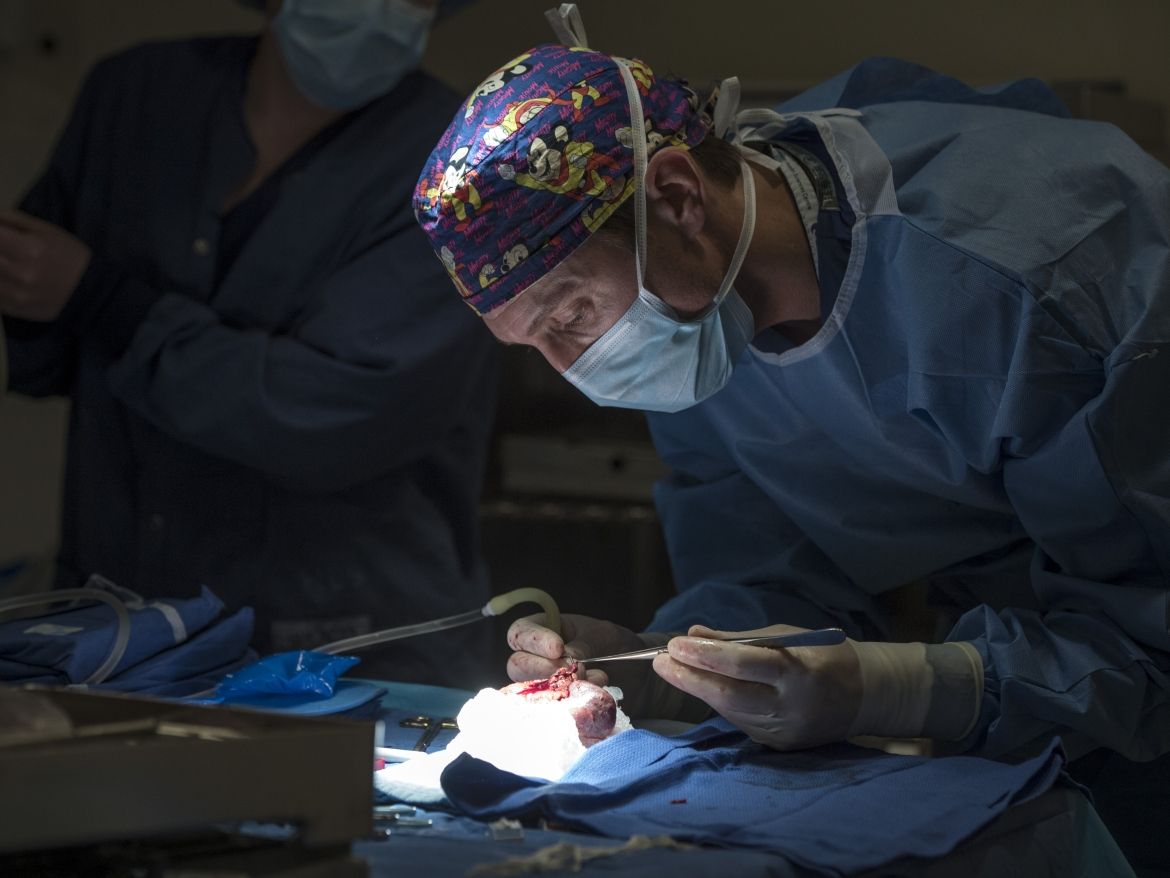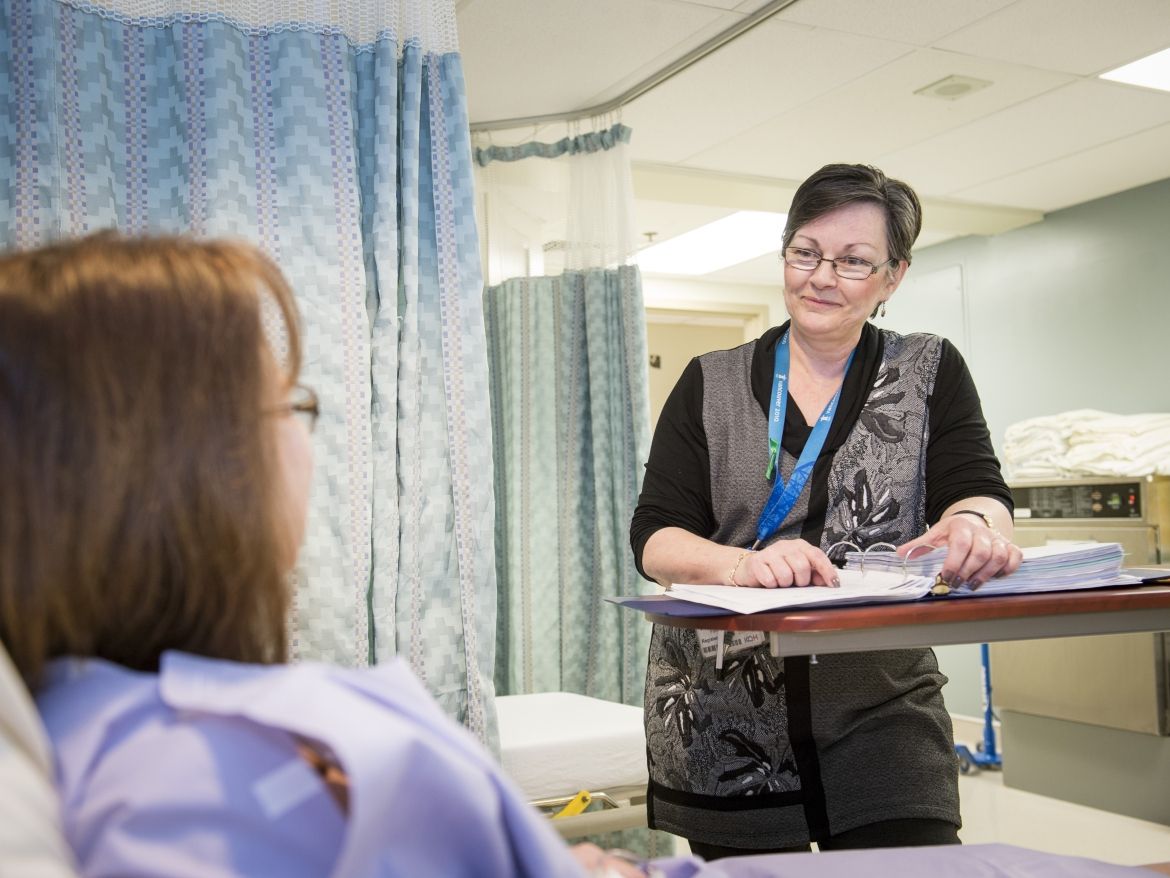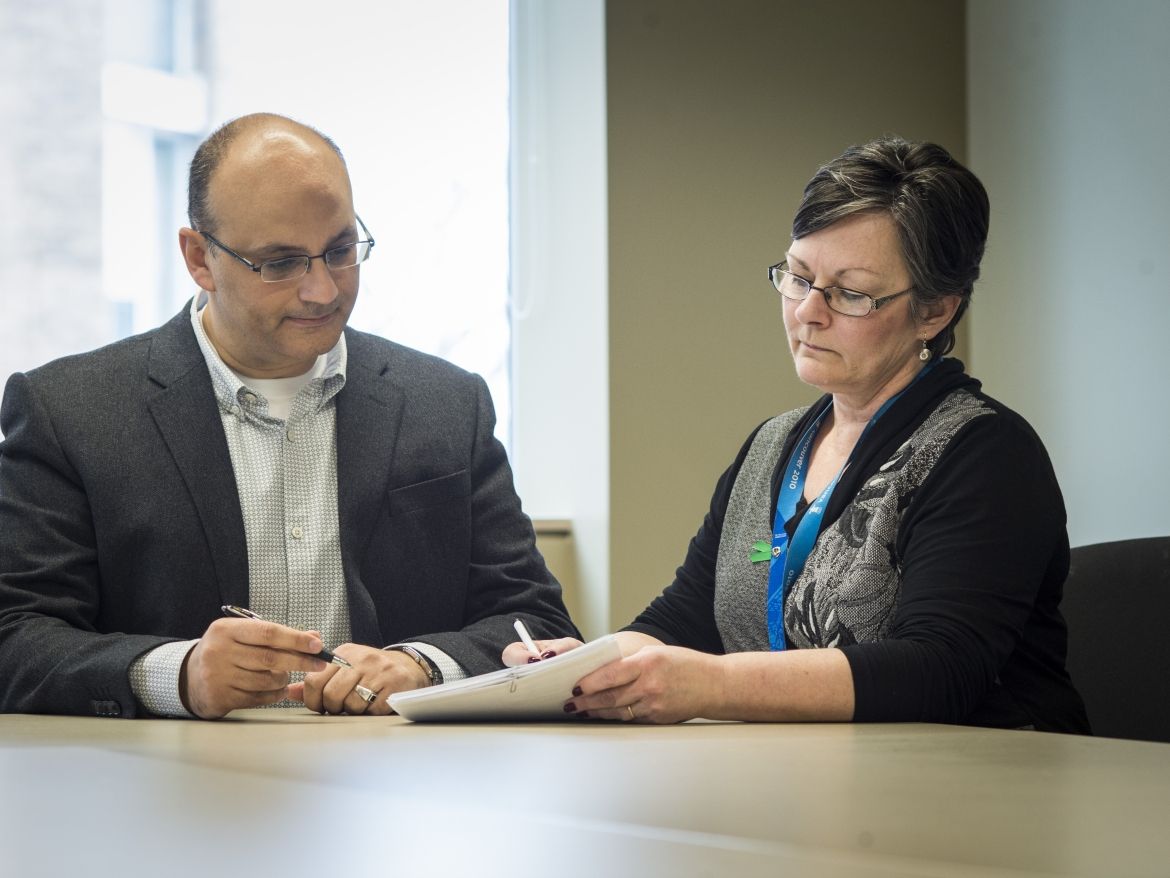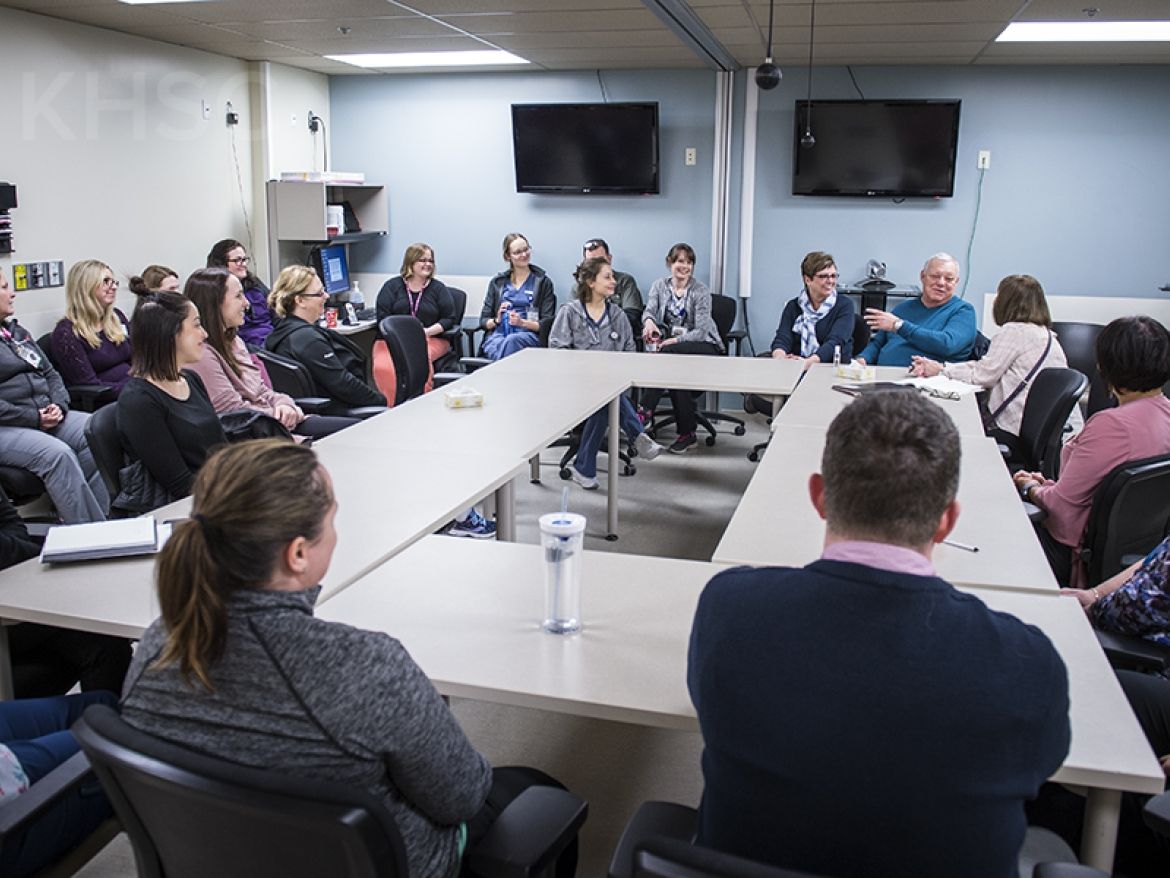Effective immediately masking is required for everyone when present on all inpatient units, in the Emergency Department (ED), the Urgent Care Centre (UCC), and the Children’s Outpatient Centre (COPC).
A life-changing gift
Lynne Anne has three kidneys. Jim now has one.
Lynne Anne learned she had polysystic kidney disease 24 years ago when she gave birth to her daughter Keegan who was first diagnosed with the condition. Since it’s hereditary, everyone else in the family was tested. Following her diagnosis, Lynne Anne led a normal life up until about three years ago. Her kidneys were not functioning as well as they used to and something would need to be done.
June of 2017 was a turning point for the couple. Jim donated a kidney to his wife, making them two of the first patients to undergo the transplant procedure through KHSC’s new Living Donor program.
“I didn’t even have to think about it,” said Jim, the emotion in his voice easy to hear. “I have two kidneys and she needed one. That was it, it was an easy decision. The most stressful part was the six months of tests leading up to the surgery and being concerned that I wasn’t going to be a candidate to donate. I wasn’t worried that I was going to back-out, I was worried that someone was going to call and say – sorry you won’t be able to do it.”
He quickly looked to lighten the mood.
“I joked with her that my kidney was community property. We have been married long enough that she gets 50 per cent of my assets and I had two kidneys, so one was already hers. Plus it was instant weight loss for me. I lost more weight in a couple of hours than I could have lost at the gym in a month.”
Lynne Anne shook her head and laughed, giving her husband a look perfected over years of marriage. She acknowledges, “the humour has helped.”
Recruiting a team of experts
Transplant surgeon Dr. Tom McGregor arrived in Kingston in September 2016 after having been recruited by Queen’s University, the Southeastern Ontario Academic Medical Organization (SEAMO) and KHSC to help develop Kingston’s new Live Donor Kidney Program.
Coming from Winnipeg, Dr. McGregor was struck by the commitment and teamwork shown between the organizations, as well as the internal departments of Nephrology, Internal Medicine, Urology and Surgery to get the program off the ground and up and running.
“I studied at Queen’s and lived in Kingston and this was an opportunity to move back closer to home and work with some very committed individuals to build a program that would benefit patients across Southeastern Ontario,” said McGregor.
Upon his arrival, he joined Dr. Sulaiman Nanji – who was already in Kingston – to bring KHSC’s total of specially trained transplant surgeons to two. The exact number required for a live donor program.
“We need two surgeons so that ethically we are always acting in the best interest of the donor and recipient,” says McGregor. “I take the lead on the procedure to remove the kidney from the donor and my job is to ensure the absolute best outcome for that patient, because the last thing we want is to jeopardize the health of the donor. Then Dr. Nanji takes the lead in the procedure for the recipient of the kidney. It’s a really good partnership.”
In the months leading up to the first transplant surgery, Dr. McGregor flew back and forth between Winnipeg and Kingston, performing procedures in our neighbouring province to ensure his skills remained as sharp as his scalpel.
KHSC performed its first procedure under the new program in June 2017. Lynne Anne and Jim Anfield were case number two, just a few weeks later.
A support for families considering donations
Arlene Funnell is the friendly voice on the other end of the phone when someone first calls the hospital to talk about making a donation. She’s KHSC’s new Donor Coordinator.
“Living donor nurses are not allowed to call individuals to solicit donations, so my job is to answer questions and help potential donors through the process from first contact, through all the tests, until the surgery and the follow up after the operation,” says Funnell.
Individuals who will be receiving a kidney meanwhile work with KHSC’s Kidney Recipient Coordinator Jenine Kramer.
The process to confirm if someone can make a donation is a detailed one. It can take anywhere between six to 12 months from a donor’s first phone call, until the day of the surgical procedure.
“A prospective donor needs to undergo a number of tests to ensure they are healthy enough to donate,” says Funnell.
Health-care teams first want to know if the donor is a match for the recipient. After that, they’ll make sure that the donation will be a minimal risk to the donor’s future health. They also check to make sure the donor doesn’t have an infection or cancer that could be transmitted to the recipient.
“My role is really to advocate for the donor, to make sure they are comfortable with the process and have all the information and education they need to make an informed decision,” says Funnell. “They need to understand that, although the recovery from the procedure is quick, there will be long-term follow up. We want to set them up for success long-term.”
The surgical procedure
Once all the tests are done and the health-care teams are confident that it is safe to go ahead with the transplant – the appointment is booked and the surgical team prepares for an early morning start.
The donor arrives at KGH at 6:30 a.m. and after one final meeting with Dr. McGregor, the surgical procedure begins at 8:00 a.m. The surgery itself takes about two-to-three hours to complete.
“We go in laparoscopically using several small incisions, instead of the more traditional approach where a patient would have one larger incision,” says Dr. McGregor. “We prefer to take the left kidney because it has larger vessels, which makes it easier to transplant into the recipient. Once it is removed, we flush it with fluid, pack it on ice and close up the donor’s incisions. About 30 to 40 minutes later we begin the recipient’s surgery.”
The recipient’s procedure also takes about two-to-three hours to complete and is done using an incision through the lower abdomen. By the time the new kidney is transplanted into the recipient, the donor is already back on the inpatient unit recovering.
“Because it’s a laparoscopic procedure, the recovery is pretty quick for the donor,” says McGregor. “They’re up in an inpatient bed recovering by the afternoon and can generally go home within 24-36 hours. It’s really the gold standard for kidney care and we’re really happy to be offering this in Kingston.”
A growing need in Southeastern Ontario
KHSC is the regional centre for renal care in Southeastern Ontario and is the home base for a team of expert nephrologists, led by Dr. David Holland, who specialize in kidney disease. This team provides care to the recipient in the lead up to the transplant, as well as their post-surgical care.
Dr. Khaled Shamseddin is one of those experts and has been integral in the creation of the new Live Donor program.
“It’s the best available treatment for patients with kidney failure since it improves quality of life and enhances patient survival,” says Shamseddin. “The disease usually progresses until the kidneys completely shut-down. At advance stages of kidney disease, when the patient’s kidney function drops to 15-20 per cent we begin to consider them for a transplant.”
In Ontario there are currently about 10 thousand patients who receive some form of dialysis and in Kingston alone there are about 400-450 patients who receive treatment through the Kingston Hemodialysis Program. With an aging population in the province, that number is expected to grow in the next few years, meaning transplantation services are becoming more and more important.
“After the transplant, the recipients see a number of benefits, including a better quality of life and higher survival rates. They can also begin to be more physically active and can return to a more normal life,” says Shamseddin. “Since they don’t need to be in hospital three times a week for dialysis, many can return to work which is of course a financial consideration for many families. Kidney transplantation is really the most optimal treatment available.”
Patients will continue to be monitored through clinic visits to ensure they remain in good health for the long-run.
“I’d like to extend my thanks to anyone who has, or is considering making a donation as well as the various teams around the hospital that support our work, such as Radiology, Cardiology, Psychology, Clinical Labs, and the Transplant Nephrology Team among many others. I see the impact first-hand impact on my patients,” says Shamseddin. “These donations save lives.”
A return to regular life
Lynne Anne Anfield knows the impact of these donations all too well.
“The outcome for us has been great – we both feel good. The team here in Kingston has done an amazing job of answering questions and supporting us. We both feel very optimistic for the years to come and are confident that we’re going to be healthy and able to live our lives however we choose.”
She and Jim were both impressed at every step of the process with the care they received.
“It was all areas of the hospital, including the ultrasound team, Emergency Department and the Intensive Care Unit, they were all fantastic,” said Jim. “They’re under a lot of pressure, but to see the healthcare teams work together in all of the different departments and work towards a single outcome has been so impressive.”
Lynne Anne agreed.
“I was in ICU for eight days and that team is just spectacular. When I was moved to an inpatient unit – the housekeeping, the dietary staff, the nurses, they were all so very pleasant. When you are in a hospital and you just want to go home, sometimes your mood isn’t very good. They were all so nice – I never met anyone that wasn’t professional and fantastic.”
However, even with all the benefits she’s seen as a result of her transplant, it may have never been something that she could have considered had the procedure not been offered close to home.
“We are so thankful that Kingston started the live transplant program because if we had to travel, I don’t know what we would have done. We had 72 appointments between the two of us to prepare for this transplant, so we just couldn’t have done Toronto or Ottawa. It wouldn’t have been physically or financially possible for us, including taking the time off work. So if we didn’t have this treatment available in Kingston we may not have had the option.”
“When they can offer this service regionally, it’s just such a bonus for people because it’s not just finding a match, or just doing the surgery, it’s all of the other stuff you have to think about as well,” added Jim.
If you are interested in learning more about the kidney donation process, or would like to consider making a donation, please contact our Donor Coordinator at 613-549-6666 ext. 7838.
“I didn’t even have to think about it. I have two kidneys and she needed one. That was it, it was an easy decision.” - Jim Anfield



